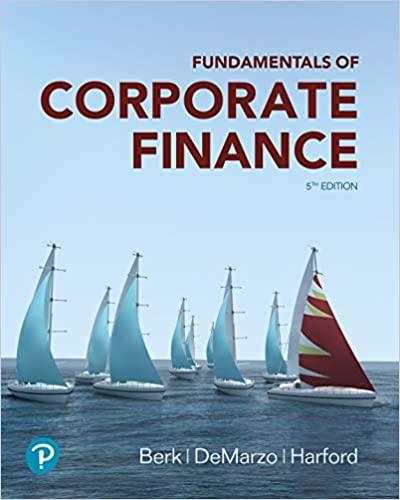Answered step by step
Verified Expert Solution
Question
1 Approved Answer
Table 1: Selected Performance Statistics, 1926-1988 Series Annual Return (Geometric Mean Rate of Return) Highest Annual Return Lowest Annual Return Standard Deviation of Annual Returns
Table 1: Selected Performance Statistics, 1926-1988
| Series | Annual Return (Geometric Mean Rate of Return) | Highest Annual Return | Lowest Annual Return | Standard Deviation of Annual Returns |
|---|---|---|---|---|
| Common Stock | 10.0% | 54.0% | -43.3% | 20.9% |
| Small Company Stocks | 12.3% | 142.9% | -49.8% | 35.6% |
| Long-term Corporate Bonds | 5.0% | 43.8% | -8.1% | 8.4% |
| US Treasury Bills | 3.5% | 14.7% | 0.0% | 3.3% |
Source: Malkiel, Burton Gordon. A Random Walk Down Wall Street. New York: Norton, 1973. Page 64.
- Assuming a risk-free rate of 3.5%, calculate the Sharpe Ratio for each of the asset types above. Show your calculations. Which asset class offers the greatest return per unit of risk?
Step by Step Solution
★★★★★
3.40 Rating (159 Votes )
There are 3 Steps involved in it
Step: 1
To calculate the Sharpe Ratio for each asset type we need to subtract the riskfree rate from the geo...
Get Instant Access to Expert-Tailored Solutions
See step-by-step solutions with expert insights and AI powered tools for academic success
Step: 2

Step: 3

Ace Your Homework with AI
Get the answers you need in no time with our AI-driven, step-by-step assistance
Get Started


